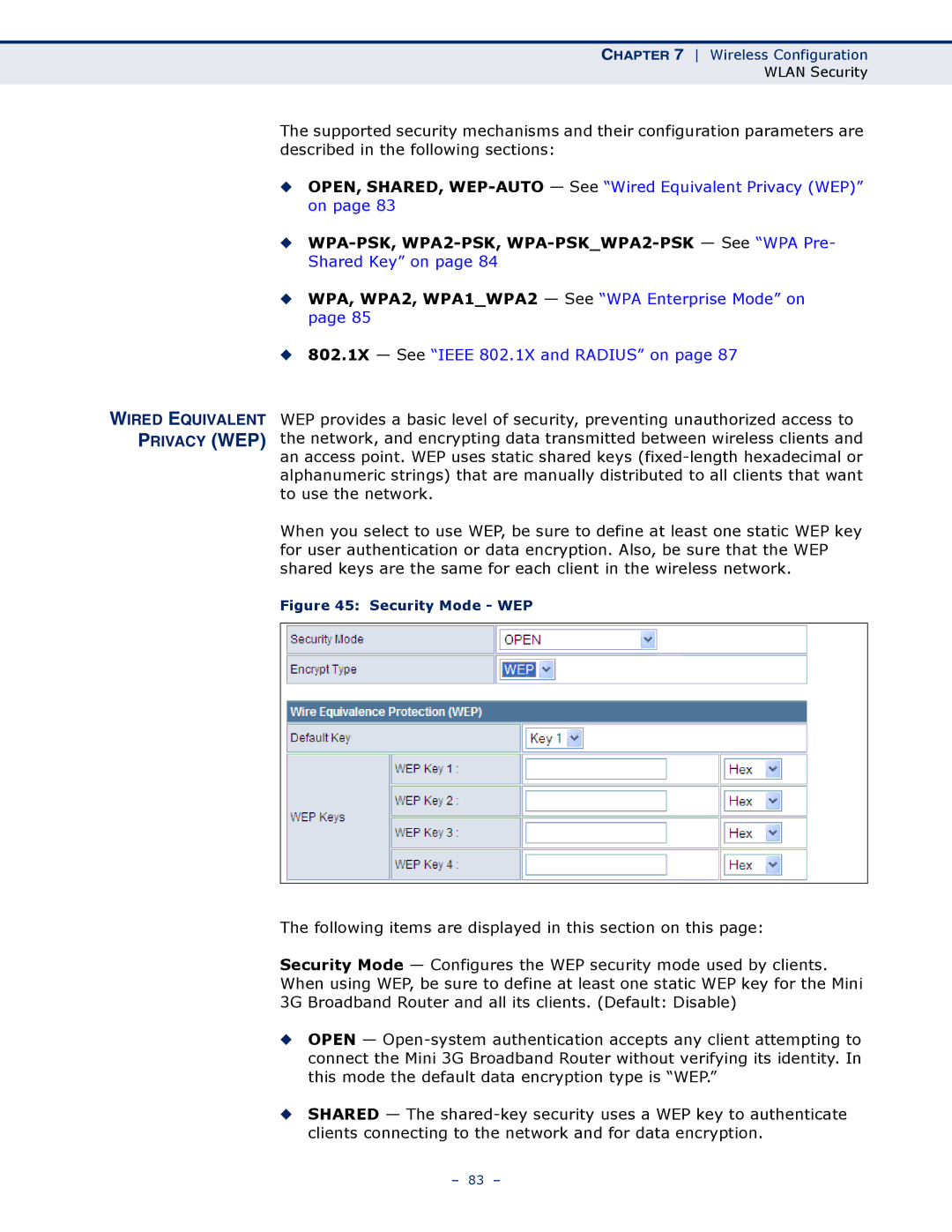
CHAPTER 7 Wireless Configuration
WLAN Security
WIRED EQUIVALENT
PRIVACY (WEP)
The supported security mechanisms and their configuration parameters are described in the following sections:
◆OPEN, SHARED,
◆
◆WPA, WPA2, WPA1_WPA2 — See “WPA Enterprise Mode” on page 85
◆802.1X — See “IEEE 802.1X and RADIUS” on page 87
WEP provides a basic level of security, preventing unauthorized access to the network, and encrypting data transmitted between wireless clients and an access point. WEP uses static shared keys
When you select to use WEP, be sure to define at least one static WEP key for user authentication or data encryption. Also, be sure that the WEP shared keys are the same for each client in the wireless network.
Figure 45: Security Mode - WEP
The following items are displayed in this section on this page:
Security Mode — Configures the WEP security mode used by clients. When using WEP, be sure to define at least one static WEP key for the Mini 3G Broadband Router and all its clients. (Default: Disable)
◆OPEN —
◆SHARED — The
– 83 –
